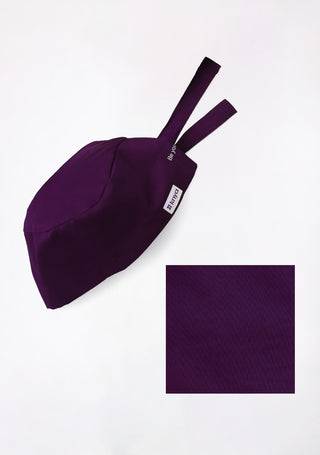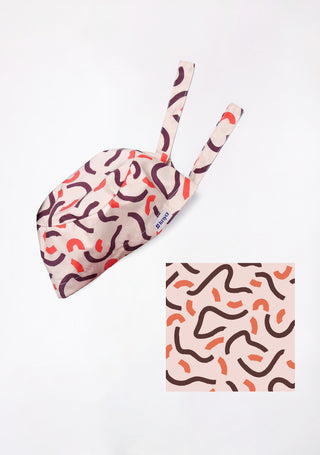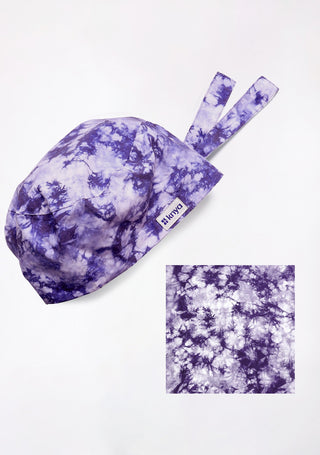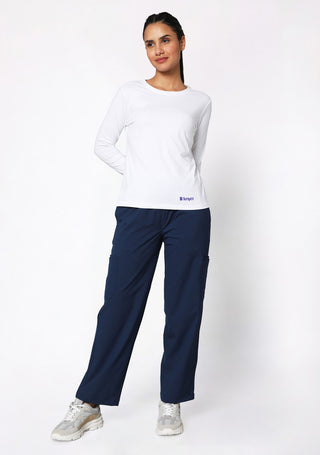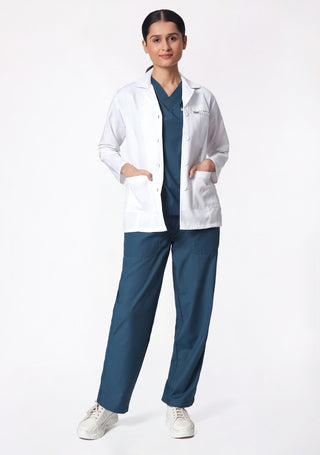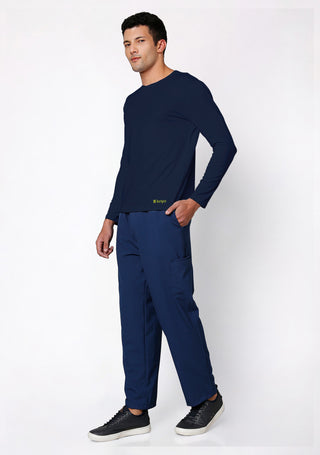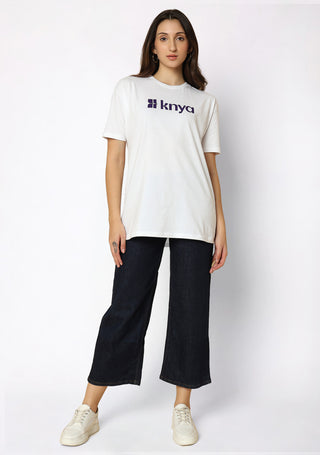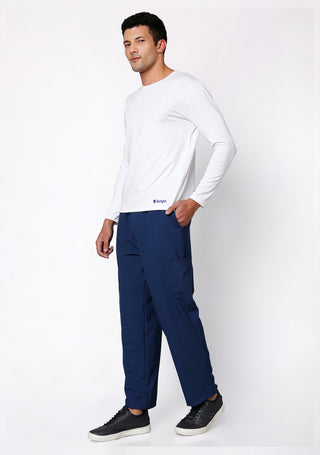The best way to elevate your professional look is to choose the right pair of scrubs , but if you want to elevate your comfort level , then you should invest in a good underscrub.Just wearing normal T-shirts as underscrub is not going to help because those base layers worn under your scrubs can affect everything from your temperature regulation and hygiene to your mobility and confidence. I
What Are Underscrubs and Why Are They Important?
Underscrubs are thin, fitted garments designed to be worn under your regular scrubs. Think of them like base layers: they regulate body temperature, wick away sweat, and offer extra coverage. A good underscrub is lightweight, breathable, and easy to move in — critical qualities when you're on your feet all day (or night).
Choosing the right underscrub is about balancing comfort, utility, and appearance. An underscrub should feel like a second skin, but also look sleek enough that you still appear polished and professional if it peeks out from under your scrub top.
For our male healthcare professionals, we offer a wide range of comfortable and stylish scrubs for men, designed to enhance both comfort and professional image
Choosing the Right Material: Comfort Starts Here
The fabric you choose is crucial for both comfort and appearance. Look for:
- Cotton blends: Soft and breathable, perfect for everyday wear.
- Moisture-wicking synthetics (like polyester blends): Ideal for high-activity shifts and hot environments.
- Spandex or elastane mixes: Offer stretch without sagging, keeping your outfit looking sharp.
- Thermal fabrics: Essential for colder months to lock in warmth.
Always prioritize lightweight, breathable fabrics that don’t bunch up under your scrubs.
How to Layer for Warm Weather
Summer heat can make dressing tricky. Here's how to style underscrubs when the sun hypes:
Tips for Hot Weather Layering:
- Short-Sleeve or Sleeveless Underscrubs: Opt for thin, moisture-wicking undershirts that keep sweat at bay without overheating you.
- Choose Light Colors: White, pastel, or nude shades reflect heat better than dark colors.
- Minimal Layers: In extreme heat, you might want to skip a base layer altogether but if your workplace is chilly inside, a breathable, sleeveless base layer is perfect.
- Prioritize Breathability: Mesh panels and ventilated designs offer airflow and reduce overheating.
Hot Weather Look:
- Lightweight, fitted tank top under a loose, V-neck scrub top.
- Match with light-colored scrub pants for an airy, fresh look.
Comfort and functionality go hand-in-hand when choosing the right scrubs for long hospital shifts
How to Layer for Cold Weather
In winter, you’ll want warmth without adding bulk that makes you look or feel awkward.
Tips for Cold Weather Layering:
- Long-Sleeve Underscrubs: Fitted, thermal tops are your best friend.
- High Necks for Extra Warmth: Mock-neck or crew-neck base layers add coverage without looking sloppy.
- Layer Strategically: A fitted thermal underscrub under a slightly relaxed-fit scrub top keeps you warm without restricting movement.
- Add a Professional Outer Layer: A scrub jacket or zip-up can add warmth while keeping your look professional.
Cold Weather Look:
- Fitted long-sleeve thermal undershirt in a neutral color like grey or navy.
- Coordinated scrub jacket over your regular scrubs, preferably with zippered pockets for practicality.
Year-Round Styling Tips: Staying Professional and Polished
No matter the season, underscrubs should enhance your look, not distract from it. Here are some general styling rules:
Stick to Neutral or Matching Colors
- Match the color of your underscrub to your scrub set for a coordinated appearance.
- Black, grey, navy, and white are always safe choices.
- If your workplace allows, soft pastels can add a gentle pop of personality without being flashy.
Fit is Key
- Underscrubs should be fitted, but not skin-tight.
- Avoid anything too baggy that will look sloppy or too tight; it will restrict movement and can be uncomfortable.
- Always do a movement test: if you can easily raise your arms, squat, and twist without adjusting your layers, you’re good to go.
Keep it Simple
- Avoid loud prints, slogans, or logos unless explicitly allowed by your facility.
- A clean, simple look is the hallmark of professionalism.
Mind Your Necklines and Sleeves
- V-necks are flattering but make sure your underscrub neckline doesn’t clash awkwardly.
- Crew neck underscrubs often work best because they stay hidden and clean-looking.
- Sleeve lengths should work with your scrubs short sleeves under short sleeves, long sleeves under short if fitted snugly.
Accessories That Make a Difference
Beyond just tops and pants, a few smart accessories can boost both your comfort and your style:
- Compression socks: Great for circulation and come in professional solid colors.
- Comfortable undershorts or leggings: For colder days, under your scrub pants.
- Scrub caps: In lightweight or thermal fabrics depending on the season.
- Underscrub gloves: Some professionals in cold environments swear by thin, grippy gloves under disposable gloves.

